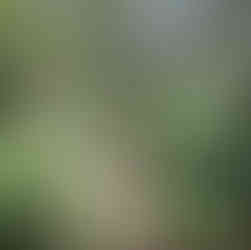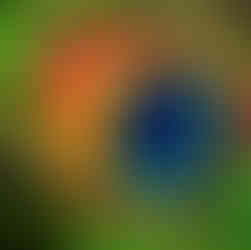Newsletter -October 2025
- pukekurafriends
- Oct 30
- 5 min read

Events Programme November 2025
4th - Wanderers’ walk.
No walk due to Garden Festival
11th Committee meeting
18th - Wanderers’ walk.
Meet at Bellringer Pavilion 10.30 a.m.
Martin Thompson - Fernery Lead will take us on a tour of the Fernery
27th Evening Meeting
Citizens Advice Bureau, next to the Y.M.C.A. - 7pm
Matthew Allen: Bamboo - Matthew will talk about his experiences in growing bamboo and all the interesting things that can be done with this grass.
Review of October's Events
7th - Wanderers’ Walk.
Lead - Vance Hooper
Armed with umbrellas and coats we joined Vance on a tour of his extended garden and orchard. From a paddock 25 years ago he has established a gully of flourishing natives (including the rare golden rimu), bulbs and many species of splendid magnolias. Though he focuses mainly on citrus for the nursery he has been experimenting with growing bananas as a retirement project. Although at the limit of their growing range in New Zealand Vance has been trialling 25 species to see what would work in Taranaki.
After soil testing and adding lime and borax, he established long double beds with hedge mulch between, fertilizing only to get established with sulphate of potash. For our wetter climate he favours frost covers for the bunches to avoid condensation and windrub. They like being planted together. Male flowers are snapped off in October. When the bananas have fruited the leaves are chopped back to bring energy back to the stem. He has also found deflowering in the bag and by removing 3 or 4 hands he gets the same weight and larger size of bananas in the remaining hands. They get few pests apart from armyworm. We heard about a ruru who nested in one of the bananas and certainly were glad to shelter under their large leaves when the rain fell.
Misi Luki is the preferred banana to grow in the backyard but has found the Honduras variety copes with our winters well while Blue Java grows well but fickle to fruit. He has about 80 bunches ripening at the moment, a testament to the success of his scientific experiment.
15th Members Lunch
Twenty-four enjoyed a High Tea style Lunch at the Tea House in Pukekura Park.
19th Plant Sale
It was all hands on deck on Sunday morning for our plant sale…plants to be shifted, priced, arranged… all ready before 10am. A good crowd assembled just before the start and we had a great morning of sales.
A BIG thanks you to all who contributed plants – these well much appreciated and well sought after! Also a HUGE thank you to the helpers with trailers, utes and all the necessary accessories who came to help, sell and advise about plants. A really successful day.
We raised around $2500 for the Friends’ funds – and increase of $1000 on last year.
Well done everyone
Sue
October 23rd - Evening Meeting
Speaker - Tony Burrell
Tony gave an interesting talk about colour in nature to an audiance of 18, which was very good considering the inclement weather outside at the time.
He spoke about how the human eye perceives colour and compared it to other mammals, birds and insects, followed by colour in plants.
Human vision is Trichromatic (three types of cone cells for red, green, and blue light), allowing perception of a broad spectrum of colours, whereas most other mammals are Dichromatic (typically two cone types), perceiving colours mostly in shades of blue and yellow, and often red-green colour-blind. It is interesting to note that human vision has evolved to see a wide variety of colours during daylight, but in dim light we have black and white vision. Most other mammals see better than us at night.
Birds on the other hand have Tetrachromatic vision (4 cone types, including one sensitive to ultraviolet (UV) light). The ability to see UV light helps in foraging (UV-reflective fruits/urine trails), mate selection (UV-reflective plumage), and predator avoidance. Birds’ visual acuity (sharpness) is often better than ours, especially in birds of prey. They can have vision as sharp as 20/5 or 20/4 (meaning they can see details at 20 feet that a human would need to be 4 or 5 feet away to see).
Insects are different again. They have Compound eyes composed of hundreds to thousands of individual light-sensing units called ommatidia, forming a mosaic image. Very low resolution (pixelated image), but the image processing allows for enhanced sensitivity to contrast and movement.
Mosquitoes, some snakes and certain fish can also see in the infrared range.
Tony then talked about how plants produce colour in their foliage. The colour is predominately due to pigments which either absorb or reflect light. The main pigments are: chlorophyll (Green), carotenoids (yellow, orange and reds as in carrots) and anthocyanin (reds, purples and blues depending on the acidity of the soil). During a year a leaf can change colour. A new leaf may start red indicating a predominance of anthocyanin, then turn green due to a dominance of chlorophyll, then in autumn the chlorophyll may breaks down and the leaves can turn yellow or orange because of carotenoids.
Plants can use colour to attract, deter, camouflage or possibly mimic another plant. For example, Tony suggested that the palatable Alseuomia pusilla might be mimicking the unpalatable horopito so that it doesn’t get eaten. This theory is controversial.
Another aspect of colour that Tony highlighted was the difference between pigmented colour and structural colour. Structural colour is the production of colour by microscopically structured surfaces that interfere with visible light, rather than relying on pigments. These structures cause specific wavelengths of light to reflect and scatter, creating vivid, often iridescent colours seen in things like butterfly wings and peacock feathers.
From the Zoo
Ten Years on: Life as a Keeper at Brooklands Zoo by Brooklands Zoo Keeper Jenny Bucksmith
Celebrating ten years as a keeper at Brooklands Zoo has been a journey filled with growth, unforgettable moments, and deep connections—with both animals and people. Looking back, it’s incredible to see how far I’ve come, not only in my confidence working with a wide range of species, but also in the relationships built along the way.
One of my earliest and most cherished memories is of Charlie the cockatoo. His cheeky personality and love of conversation made him a favourite among staff and visitors alike. Charlie taught me that animals have distinct personalities, and building trust with them is a privilege.
Witnessing the birth of Feta the lamb was another highlight, as mum Tomato instinctively knew exactly what she had to do. Watching Feta grow and thrive under our care, was a beautiful testament to the nurturing environment we strive to create.
Over the years, I’ve had the joy of working with a wide range of species. The kune kune pigs, with their curious and gentle nature, are a delight to care for. The leopard tortoises, slow-moving but full of character, have taught me patience and precision in reptile care.
Raising pheasants and chickens from eggs to adulthood has been one of the most rewarding experiences. Watching them hatch, grow, and thrive is a testament to the dedication and teamwork that defines our zoo.
Perhaps the most significant change over the decade has been my growth in confidence. From nervous beginnings to now comfortably working with everything from birds to reptiles and mammals, I’ve learned to trust my instincts and lean on the expertise of my colleagues.
Brooklands Zoo isn’t just a workplace—it’s a community. The support, laughter, and shared love for animals have made these ten years unforgettable. I’m proud of what we’ve achieved and excited for what’s still to come.
Friends of Pukekura Park Membership Application Form
To apply for membership, either click on the link to our website page or download a pdf application form
Copyright © 2024 Friends of Pukekura Park, All rights reserved.






































































Comments